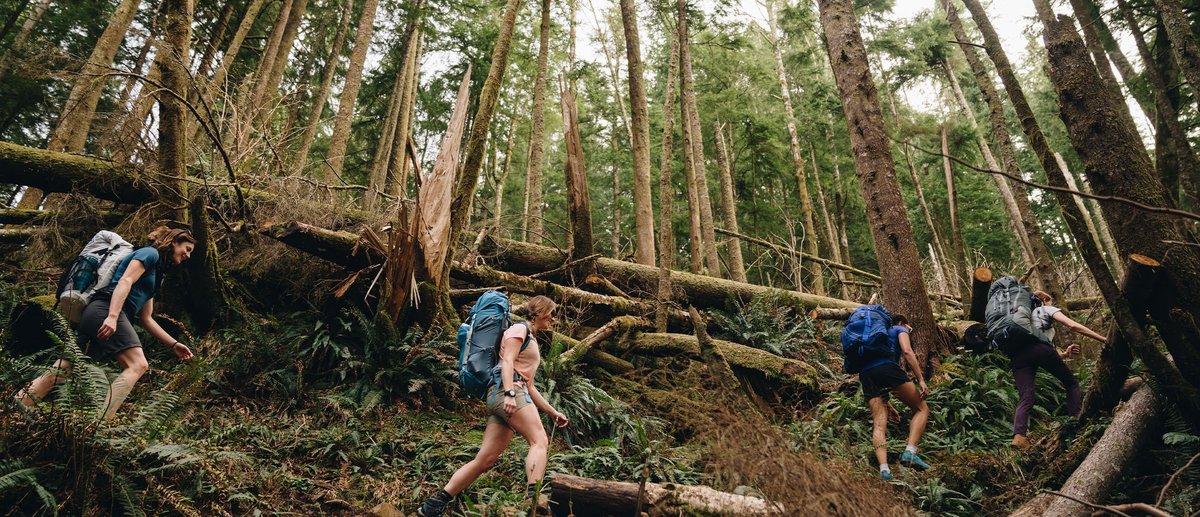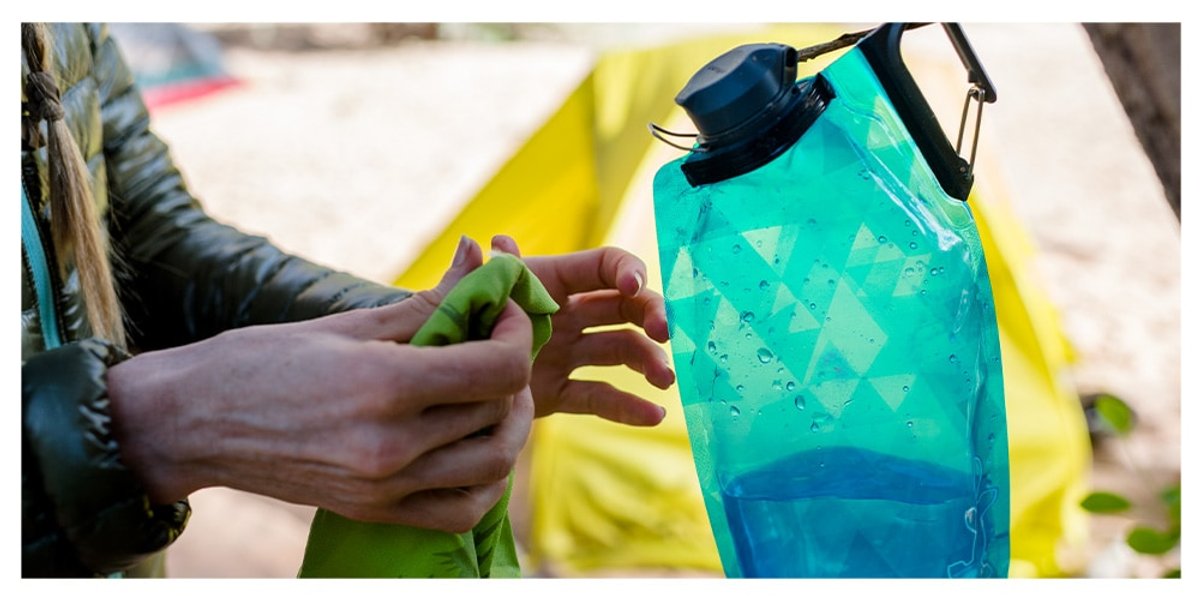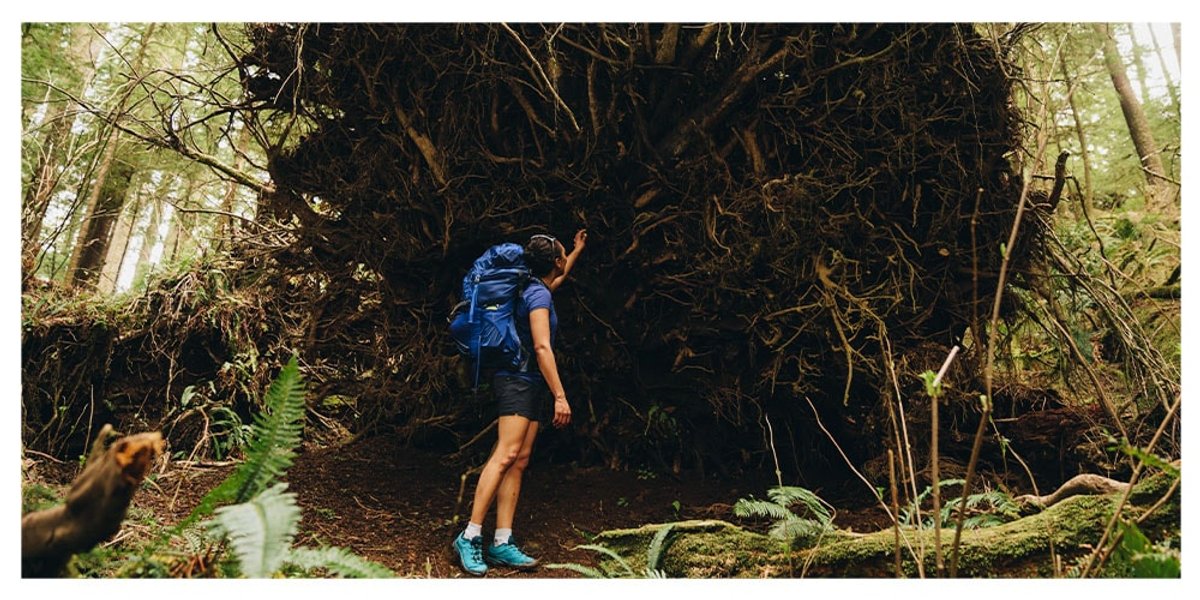
Periods In The Wild
Navigating Menstruation On The Move
Even at the best of times, periods can be an added stress, and being outside can bring more complications and questions. This guide will walk you through the medical and practical aspects of exploring the outdoors during your time of the month. Whether you’re hiking, biking, canoeing, or climbing, many of the same strategies apply.

Staying Healthy
Hands
Before and after changing your pad, tampon, or menstrual cup, wash your hands with biodegradable soap or hand sanitizer. Make sure you’re at least 200 feet from a stream if you’re using soap so you don’t contaminate the water. If you have no soap, rub your hands with sand or dirt and rinse with water—the friction will help remove bacteria. Another trick is to designate clean and dirty hands. Handle any used items with one hand and clean items with another. That way, the clean things stay clean.
Body
Keeping track of your period and knowing your cycle prior to making a trip is another way you can stay clean. If you know when you bleed and for how long, you can plan to camp near streams or lakes on those days. After setting up camp, use a bandana for a sponge bath and put on a fresh set of clothes. Saving a special set of clean camp clothes (including underwear) is extra important when you’re on your period. If and when your day clothes get dirty, you can wear the clean set while spot cleaning or fully rinsing and drying your day set.
Vulva
No matter the temperature, you’re going to get sweaty if you’re moving around all day. Around menstruation, changes in your hormones can also make you more prone to yeast infections. For these reasons, bring extra underwear on your trip. Cotton is the most breathable, but can be cold when wet. Wool underwear and synthetic period underwear are better options, and wool has the added benefit of being odor-resistant.
Additionally, small absorbent cloths or packable towels can be used to wipe off after taking out a menstrual cup or tampon. These can be rinsed at the end of the day or after each use, so you don’t have the added weight and bulk of packing out disposable wipes. You can also use what’s called a backcountry bidet, a water bottle with a hole cut in the cap (specific attachments available as well). It’s worth noting that outside of the U.S. this is a very common method for cleaning and it’s common because it works. A bidet is a great option if you don’t want to pack out toilet paper.

Leaving No Trace
Menstrual cups are the most eco-friendly option for handling menstrual blood, as properly cleaned and stored, a menstrual cup lasts for 5-7 years. They’re small, flexible cups that can be inserted into the vagina to catch and collect fluid. Before removing a cup, dig a cat hole for the blood, then cover the hole once you’ve emptied your cup. Wash the cup with filtered water or simply reinsert it. Don’t wash it with stream water! This can introduce unwanted bacteria that could be harmful to your vagina.
Menstrual cups aren’t comfortable or effective for everyone. For these reasons, pads or tampons are sometimes a better option. When using tampons and pads, you’ll need to pack out your waste so make sure to carry a plastic bag. Reinforce it with duct tape to keep it durable and inconspicuous. Putting coffee grounds or crushed aspirin in the bag will reduce any smell. Always make sure to store this waste in a bear canister so you don’t attract any unwanted visitors.

Listening To Your Body
No matter what your cycle is like, you’ll experience different amounts of energy at different times. Most people with menstrual cycles have more energy during ovulation and less while menstruating, with many ups and downs between these stages. Moods will also fluctuate, the best moods coinciding with ovulation and the worst with menstruation. Many people make plans based on their menstrual cycle and this is something you can consider. If you are outdoors while experiencing your cycle, be open to making changes based on how you feel.
When cramps strike, you can heat water and put it in a steel or aluminum bottle to use as a heating pad. A pain reliever of your choice is also good to pack.
Non-menstruators can help out by keeping menstruation products on hand and having conversations about what menstruators need. Asking questions and showing empathy are good strategies for any travel companions, and they become especially important when it comes to periods. “How can rest and stillness be incorporated into travel?” is a great place to start.

Outdoor Period Care Kit
Here are some items you can think about packing for yourself or others to manage periods outside:
- Tampons/pads/menstrual cup
- Extra underwear (wool or synthetic)
- Reusable cloth for wiping
- Biodegradable soap/hand sanitizer
- Ibuprofen
- Steel or aluminum bottle
- Plastic bag (for waste)
There is no one right way to navigate menstruation in the wild. If something is making you anxious or uncomfortable, try a different method. It will probably take a few trips to figure out what works for you. Focus on what feels easy and ethical rather than what your friends are doing.
Bethany Clarke is a freelance writer with work in She Explores, Litro Magazine and Amjambo Africa. You can find her art and hiking adventures on Instagram @bethanymclarke.